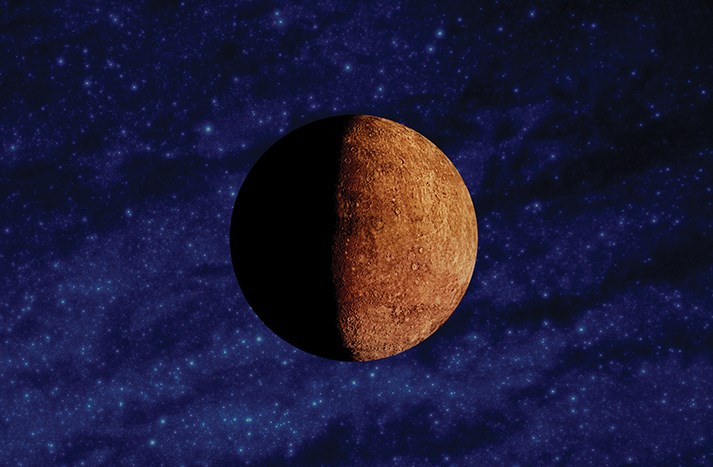Early November should provide some interesting views of Mercury et al. On Nov. 2 at 0635, Mercury rises in the ESE with the Moon about 12 degrees above the horizon. At about 0645, the International Space Station (ISS) should rise above Earth’s shadow in the NW, pass nearly overhead at 0648 and set in the east at about 0652, just left of Mercury and the Moon. Please note that this is an update to last month’s predictions; NASA routinely adjusts the orbital elevation of the ISS to compensate for the very slight drag of our atmosphere. I hope this one’s right.
On Nov. 7 at about 1800 and due West you should see a very thin crescent New Moon about 5 degrees above the horizon and a “first quarter” Venus about two degrees left of the Moon. You’ll need very good seeing and a small telescope to see Venus as other than a bright blob.
There is also a nearly-total lunar eclipse starting about 2320 on Nov. 18. The Moon will be high in the SSW, just below and to the right of the Pleiades cluster which won’t be all that easy to see with a full Moon close by. However, as the Moon orbits the Earth, its motion will take it into Earth’s shadow, starting at about its 10 o’clock position. Remember, while Earth’s rotation makes everything in our sky move left to right if you’re looking south, the Moon orbits the Earth in the same direction as we rotate so it’s actually moving right to left relative to the stars. The eclipse is at maximum about 0100 on Nov. 19 when only a thin sliver of the Moon at about its 7 o’clock position will be in sunlight. With the Moon in shadow, there should be no problem picking out the Pleiades – or Orion or Taurus or anything else in the vicinity. The shaded part of the Moon should be a pale gray or possibly a pale reddish colour – caused by refraction in Earth’s atmosphere. The eclipse is over by about 0248. Incidentally, it was noticed in classical Greek time that the Earth’s shadow on the Moon was round with a diameter about four times that of the Moon’s; so much for the Flat Earth myth.
The Oct. 9 Astronomy Picture of the Day site (APOD) relates an interesting story of two astronomers at the Observatoire de Haute-Provence in France. In 1995 they used an observatory spectrograph to discover a cyclical Doppler shift in the light from Pegasus 51, as if it were regularly moving toward and then away from us. The picture also shows the constellation lines and the star’s location. Since Peg 51 is a Sun-like star – about 10 per cent more massive and maybe 15 per cent older than our Sun – with no companion star, something else must be responsible for its wobble. Their conclusion: it has a planet – and the first ever confirmed exoplanet. The APOD text contains links to details of this discovery that are great reading. That’s the sort of amazing discovery that happens now and then in science, like the Danish astronomer I wrote about in my March 2021 article who in 1676 observed the eclipses of Io, a moon of Jupiter, and by timing whether they were ahead of or behind the predicted times proceeded to calculate the speed of light.
Remember, all of the movements of moon and planets described can be checked out on the web at: heavens-above.com. The next regular meeting of the Astronomy Club should be Nov. 12 at 7:30 p.m. using Zoom. Details of the meeting topic and how to register for the meeting will be on the club website at sunshinecoastastronomy.wordpress.com the week of the meeting.



